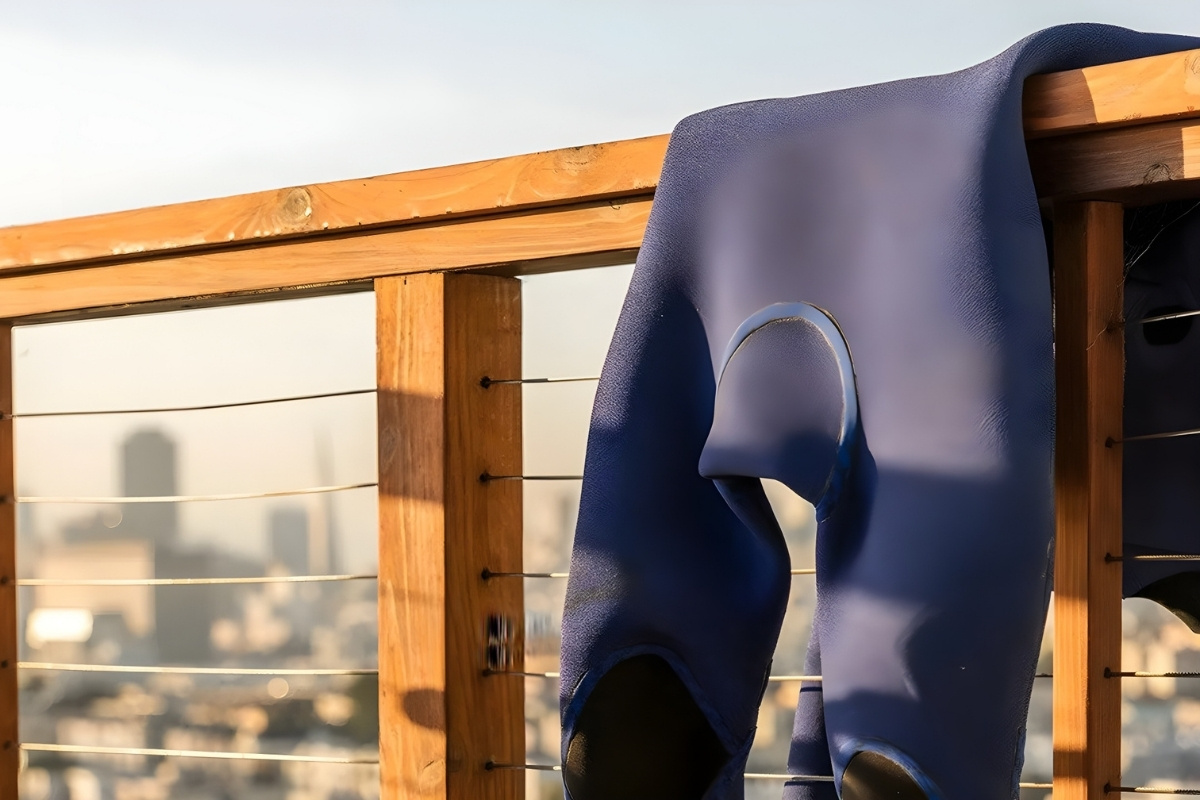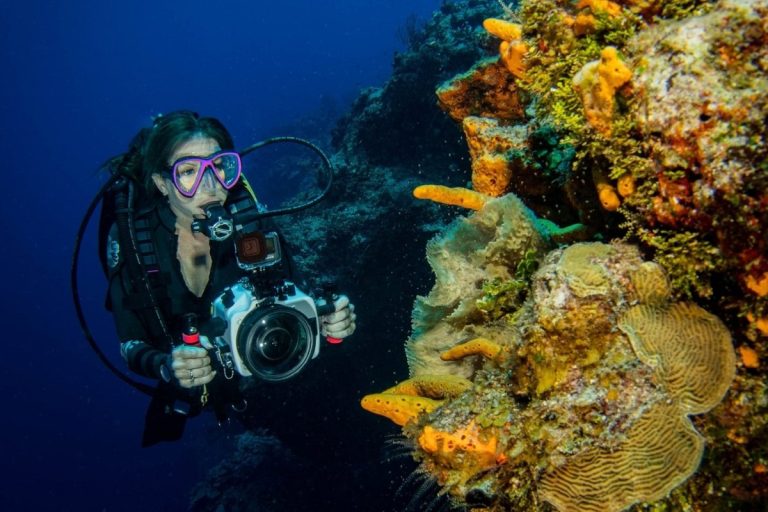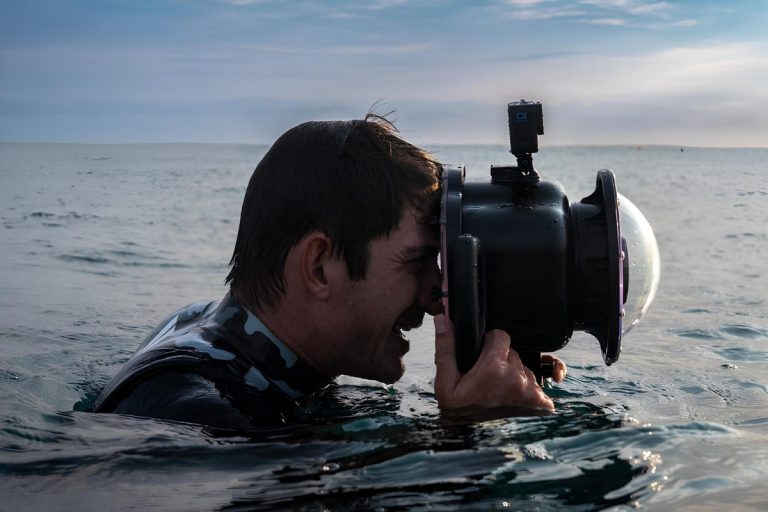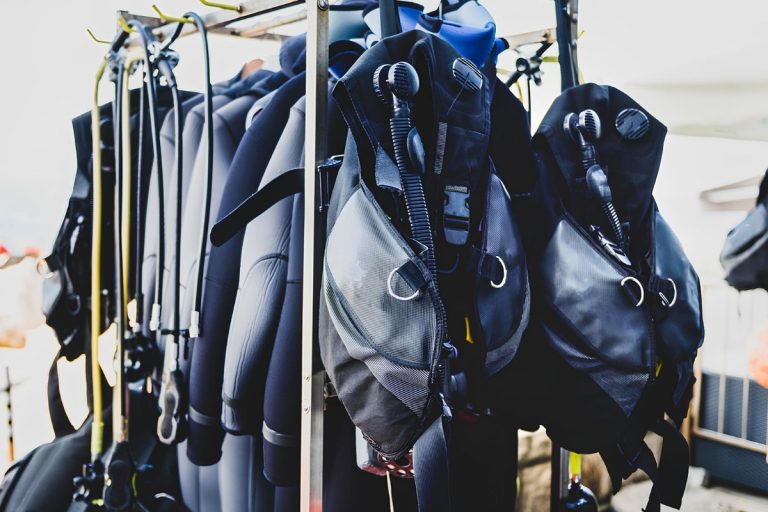Importance of Neoprene Care
Taking proper care of your neoprene wetsuit isn’t just about keeping it looking good – it’s about protecting a significant investment and ensuring peak performance every time you hit the water. Modern wetsuits represent a remarkable evolution from the bulky, restrictive suits of decades past. Today’s neoprene technology delivers unprecedented flexibility, superior warmth retention, and precision fit that enables high-performance activities even in challenging cold-water conditions.
When you treat your wetsuit with the respect it deserves, you’re not just maintaining a piece of equipment – you’re preserving the technology that keeps you comfortable and safe during your aquatic adventures. Proper maintenance practices can literally double or triple the usable life of your wetsuit, transforming what might seem like an expensive purchase into a cost-effective long-term investment. The difference between a well-maintained suit and a neglected one becomes apparent quickly, affecting everything from thermal efficiency to structural integrity. Quality neoprene care practices will extend their lifespan significantly, ensuring your gear performs at its best season after season.
Benefits of Proper Maintenance
Regular maintenance delivers immediate and long-term benefits that every water sports enthusiast can appreciate. A well-cared-for wetsuit maintains its original flexibility, allowing for unrestricted movement during swimming, surfing, or diving activities. The neoprene retains its insulating properties longer, keeping you warmer in cold water conditions that would otherwise cut short your time in the water.
Proper care also prevents the accumulation of salt, sand, and organic matter that can break down neoprene fibers over time. This maintenance routine helps preserve the suit’s original fit, preventing the stretching and sagging that makes wetsuits less effective and less comfortable to wear.
Impact on Performance
Your wetsuit’s performance directly correlates with how well you maintain it. Clean, properly stored neoprene maintains its buoyancy characteristics and thermal efficiency, two critical factors for any water activity. Salt residue and accumulated grime can stiffen the material, restricting your range of motion and making every stroke or paddle more difficult than necessary.
A well-maintained wetsuit also seals better against your skin, preventing cold water from flushing through and compromising your core temperature. This improved seal translates to longer, more comfortable sessions in the water, whether you’re catching waves or exploring underwater environments.
Longevity of Wetsuits
The lifespan of a quality wetsuit depends almost entirely on how you treat it between uses. Wetsuits that receive proper care routinely last five to ten years with regular use, while neglected suits may deteriorate within a single season. The key lies in understanding that neoprene is a synthetic rubber that responds predictably to environmental stresses.
Temperature extremes, UV exposure, and chemical contamination accelerate the aging process, causing the material to lose elasticity and develop cracks. Conversely, gentle handling, proper cleaning, and appropriate storage conditions preserve the molecular structure of the neoprene, maintaining its performance characteristics for years.
Rinsing Techniques
Rinsing your wetsuit properly after each use forms the foundation of effective neoprene care. This simple step removes the salt, sand, and organic matter that accumulate during water activities, preventing these contaminants from embedding in the neoprene and causing long-term damage. The rinsing process doesn’t require expensive equipment or complicated procedures – just attention to detail and consistency.
The timing of your rinse matters as much as the technique itself. Salt water begins crystallizing as it dries, and these crystals can cut into neoprene fibers like microscopic knives. Sand and sediment create abrasive conditions that wear away the material’s surface. Biological matter, including algae and bacteria, can cause odors and material degradation if left to multiply in the warm, moist environment of a wet suit.
Effective rinsing removes these threats before they can cause damage, but the process must be thorough and gentle. Rushing through a quick spray-down might remove surface salt but leave deeper contamination that continues causing problems. Taking a few extra minutes to rinse properly pays dividends in extended wetsuit life and better performance.
Cool Fresh Water Rinsing
Cool fresh water represents the gold standard for wetsuit rinsing, effectively dissolving salt deposits while being gentle on neoprene materials. The temperature should feel comfortable to your skin – neither cold enough to shock nor warm enough to feel heated. This temperature range, typically between 60-70 degrees Fahrenheit, provides optimal cleaning power without risking thermal damage to the synthetic rubber.
Start by rinsing the exterior surface thoroughly, paying special attention to areas where salt and sand tend to accumulate, such as around zippers, seams, and textured panels. Allow the water to flow over the entire surface for several minutes, ensuring complete coverage. The goal is to dissolve and flush away all traces of salt water and debris.
Avoiding Hot Water Damage
Hot water poses one of the most serious threats to neoprene integrity, yet many wetsuit owners make this mistake without realizing the consequences. Water temperatures above 85 degrees Fahrenheit begin to soften the neoprene’s molecular structure, leading to permanent stretching and loss of elasticity. Extremely hot water can cause immediate and irreversible damage, creating weak spots that eventually develop into tears.
The damage from hot water isn’t always immediately visible, making this mistake particularly insidious. The neoprene may appear normal after hot water exposure but will have lost some of its structural integrity, leading to premature failure during normal use.
Using a Plastic Tub for Rinsing
A large plastic tub or container transforms wetsuit rinsing from a messy, inefficient process into a controlled, thorough cleaning routine. This approach allows you to submerge the entire wetsuit in fresh water, ensuring every surface receives adequate attention. The tub method also conserves water compared to continuous hose rinsing while providing better cleaning results.
Fill the tub with cool fresh water and submerge your wetsuit completely, allowing it to soak for 10-15 minutes. This soaking time gives the water opportunity to penetrate seams and folds where salt and debris tend to hide. Gently agitate the water occasionally to help dislodge stubborn particles, but avoid aggressive scrubbing that could damage the neoprene surface.
Drying Methods
Proper drying techniques are crucial for maintaining your wetsuit’s structural integrity and preventing the growth of mold, mildew, and bacteria that thrive in moist environments. The drying process requires patience and attention to environmental conditions, as rushing this step can cause permanent damage that compromises your wetsuit’s performance and longevity.
The key to successful wetsuit drying lies in understanding that neoprene needs time to release moisture gradually. Forcing the process with heat or direct sunlight may seem efficient, but these approaches cause the material to dry unevenly, leading to stiffening, cracking, and loss of elasticity. Natural air drying in appropriate conditions preserves the neoprene’s flexibility while ensuring complete moisture removal.
Environmental factors play a crucial role in the drying process. Humidity, air circulation, and temperature all affect how quickly and evenly your wetsuit dries. Understanding these factors allows you to choose optimal drying conditions and avoid situations that could damage your gear.
Hang-Drying Techniques
Hanging your wetsuit properly distributes its weight evenly and allows air to circulate around all surfaces, promoting uniform drying. Use a wide, padded hanger specifically designed for wetsuits, or fold the suit in half at the waist and hang it over a broad surface to prevent stress concentration at any single point. This approach prevents the stretching and deformation that can occur when wet neoprene supports its full weight from a single point.
Position the wetsuit so that water can drain freely from all areas, including the arms, legs, and torso. Turn the suit inside out halfway through the drying process to ensure both surfaces dry completely. This technique prevents moisture from becoming trapped in seams and folds where it could promote bacterial growth.
Shaded and Windy Areas for Drying
The ideal drying environment combines shade, good air circulation, and moderate temperatures. A covered patio, garage with open doors, or shaded outdoor area with natural breeze provides optimal conditions for neoprene drying. Moving air accelerates moisture evaporation while preventing the stagnant conditions that encourage mold and mildew growth.
Wind helps carry away moisture-laden air and replaces it with drier air that can absorb more water vapor. This natural air exchange process dries your wetsuit more effectively than still air conditions, even in humid environments.
Avoiding UV Exposure
Ultraviolet radiation breaks down the molecular bonds in neoprene, causing the material to become brittle and prone to cracking. Even brief exposure to direct sunlight can begin this degradation process, while prolonged UV exposure causes irreversible damage that significantly shortens wetsuit life. The effects of UV damage accumulate over time, so even short exposures add up to significant deterioration.
Choose drying locations that remain shaded throughout the day, not just at the time you hang your wetsuit. Sun angles change, and areas that seem protected in the morning may receive direct sunlight later in the day.
Storing Your Wetsuit
Proper storage protects your wetsuit during periods of non-use, preventing the gradual deterioration that can occur even when the suit isn’t being worn. Storage conditions affect everything from neoprene flexibility to zipper function, making this aspect of care as important as post-use cleaning and drying. The goal is to maintain the wetsuit in ready-to-wear condition while protecting it from environmental stresses that cause premature aging.
Temperature stability, humidity control, and physical support all play crucial roles in effective wetsuit storage. Fluctuating conditions stress the neoprene material, while improper physical support can cause permanent deformation that affects fit and performance. Understanding these factors helps you choose storage methods that preserve your investment.
Long-term storage requires additional considerations beyond day-to-day care. Seasonal storage, travel preparations, and extended periods of non-use each present unique challenges that require specific approaches to prevent damage and maintain readiness.
Hanging vs. Laying Flat
The choice between hanging and laying flat depends on your storage space, the wetsuit’s condition, and the duration of storage. Hanging works well for short-term storage and allows air circulation that prevents moisture accumulation, but requires proper support to prevent stretching. Use a wide, padded hanger that distributes the weight across the shoulders, or fold the suit at the waist and hang it over a broad bar.
Laying flat provides excellent support for the entire wetsuit but requires adequate space and proper ventilation to prevent moisture problems. This method works particularly well for long-term storage, as it eliminates stress points that could cause permanent deformation over time.
Preventing Deformation During Storage
Neoprene memory means that prolonged stress in one position can cause permanent shape changes that affect fit and performance. Avoid folding your wetsuit tightly or storing it in cramped spaces where it must maintain unnatural positions. Sharp creases and compression points can become permanent features that create uncomfortable pressure points when wearing the suit.
Rotate the wetsuit’s position periodically during long-term storage to prevent any single area from bearing stress for extended periods. This rotation helps maintain the suit’s original shape and prevents the development of permanent creases or flat spots.
Avoiding Hot Cars and Direct Sunlight
Vehicle interiors reach extreme temperatures that can cause immediate and permanent damage to neoprene materials. Even on moderately warm days, car interiors can exceed 120 degrees Fahrenheit, temperatures that soften neoprene and cause irreversible stretching. The confined space also traps moisture, creating conditions that promote mold and mildew growth.
Direct sunlight storage poses similar risks, combining UV radiation damage with excessive heat. These conditions accelerate the aging process and can cause visible deterioration in just a few exposures.
Cleaning Products
Selecting appropriate cleaning products for your wetsuit requires understanding the unique properties of neoprene and how different chemicals affect this synthetic rubber material. The wrong cleaning products can cause immediate damage or gradual deterioration that shortens your wetsuit’s lifespan, while the right products enhance cleaning effectiveness without compromising material integrity.
Commercial cleaning products vary widely in their formulation and intended use. Products designed for general fabric cleaning may contain chemicals that damage neoprene, while specialized wetsuit cleaners offer targeted cleaning power without harmful side effects. Understanding these differences helps you make informed choices that protect your investment.
The cleaning product you choose affects more than just cleanliness – it influences odor control, material flexibility, and long-term durability. Some products leave residues that attract dirt or affect the neoprene’s performance characteristics, while others enhance the material’s natural properties and extend its useful life.
Specialized Neoprene Detergents
Purpose-built neoprene detergents offer the most effective and safest cleaning option for wetsuit maintenance. These products are formulated specifically for synthetic rubber materials, providing powerful cleaning action while preserving neoprene’s flexibility and integrity. They typically contain surfactants that break down oils and organic matter without the harsh chemicals found in general-purpose detergents.
Specialized detergents often include conditioners that help maintain neoprene flexibility and prevent the stiffening that can occur with repeated use and cleaning. These products are concentrated, requiring only small amounts for effective cleaning, making them cost-effective despite higher initial prices.
Using Baby Shampoo as an Alternative
Baby shampoo provides an excellent alternative to specialized neoprene cleaners, offering gentle yet effective cleaning power at a fraction of the cost. The mild formulation removes oils, salt, and organic matter without the harsh chemicals that can damage neoprene. Baby shampoo’s pH balance is compatible with synthetic rubber materials, making it safe for regular use.
The conditioning agents in baby shampoo help maintain neoprene flexibility while providing pleasant fragrance that combats wetsuit odors. Use a small amount mixed with cool water, allowing the solution to work for several minutes before rinsing thoroughly.
Removing Odors Effectively
Wetsuit odors develop from bacterial growth in the warm, moist environment created by body heat and trapped water. Effective odor removal requires eliminating the bacteria causing the smell, not just masking it with fragrances. Proper cleaning with appropriate products addresses the root cause while preventing future odor development.
For persistent odors, soak the wetsuit in a solution of cool water and baby shampoo for 30 minutes before rinsing thoroughly. This extended contact time allows the cleaning agents to penetrate deeply and eliminate embedded bacteria that cause ongoing odor problems.
Repairing Tears and Leaks
Even well-maintained wetsuits eventually develop tears, punctures, or seam failures that require repair to maintain their effectiveness. Understanding basic repair techniques allows you to address minor damage before it becomes major problems, extending your wetsuit’s useful life and maintaining its performance characteristics. Many repairs can be accomplished at home with basic tools and materials, while others require professional attention.
The key to successful wetsuit repair lies in identifying damage early and addressing it promptly. Small tears can quickly become large rips if left unattended, especially when subjected to the stresses of water sports activities. Regular inspection of your wetsuit helps identify potential problems before they compromise the suit’s integrity.
Different types of damage require different repair approaches. Understanding these distinctions helps you choose appropriate repair methods and materials, ensuring lasting fixes that restore your wetsuit’s functionality. When repairs are beyond your skill level, knowing when to seek professional help prevents further damage and ensures proper restoration. Following a comprehensive step-by-step repair guide helps ensure successful outcomes for common wetsuit problems.
Identifying Damage
Regular wetsuit inspection should become part of your routine maintenance, allowing you to catch problems early when they’re easier and less expensive to fix. Look for obvious tears, punctures, and worn areas, but also check for subtle signs of damage like thinning neoprene, loose seams, and zipper problems that could develop into major issues.
Pay special attention to high-stress areas like knees, elbows, and shoulders where the neoprene experiences the most stretching and abrasion. These areas typically show the first signs of wear and are most likely to develop tears during use.
Basic Repair Techniques
Small tears and punctures can often be repaired using neoprene cement and patches cut from old wetsuit material. Clean the damaged area thoroughly and allow it to dry completely before applying the adhesive. The key to lasting repairs lies in proper surface preparation and following the cement manufacturer’s instructions precisely.
For seam repairs, carefully separate the damaged seam and clean away old adhesive before applying new cement. Press the seam together firmly and allow adequate curing time before using the wetsuit.
When to Seek Professional Help
Large tears, complex seam failures, and zipper replacements typically require professional repair services that have specialized equipment and expertise. Attempting these repairs yourself can result in further damage that makes professional repair more difficult or impossible.
Professional repair services also have access to materials and techniques that aren’t available to consumers, often resulting in repairs that are stronger and more durable than the original construction.
Handling Techniques
Proper handling techniques prevent many of the tears, stretches, and other damage that can occur during wetsuit use and removal. The way you put on, wear, and remove your wetsuit significantly affects its longevity and performance. Developing good handling habits protects your investment and ensures your wetsuit remains in optimal condition.
Neoprene’s flexibility makes it susceptible to damage from fingernails, jewelry, and rough handling. Understanding the material’s limitations and working within them prevents most handling-related damage. The extra time spent using proper techniques pays dividends in extended wetsuit life and fewer repair needs.
Travel and storage situations present unique handling challenges that require specific techniques to prevent damage. Packing a wetsuit improperly can cause permanent creases, tears, or other damage that affects fit and performance. Learning appropriate travel techniques protects your gear during transport.
Gentle Removal to Prevent Tears
Wetsuit removal requires patience and proper technique to avoid tears and stretching. Start by peeling the suit away from your body gradually, working from the extremities toward the torso. Avoid pulling on the neoprene itself; instead, grasp seams and reinforced areas when additional leverage is needed.
Take your time during removal, especially when the neoprene is wet and more susceptible to damage. Rushing the process often results in tears that could have been easily avoided with a more careful approach.
Avoiding Damaging Practices
Common damaging practices include using fingernails to grip the neoprene, stepping on the suit while changing, and yanking on stuck zippers. These habits cause immediate damage or create weak spots that fail later during normal use. Developing awareness of these practices helps you avoid them automatically.
Keep fingernails trimmed short and avoid wearing jewelry that could catch or tear the neoprene. Use your fingertips rather than nails when handling the wetsuit, and be conscious of sharp objects in your changing area.
Safely Packing for Travel
Travel packing requires balancing space efficiency with damage prevention. Roll your wetsuit loosely rather than folding it tightly, and avoid placing heavy items on top of the packed suit. Use a dedicated wetsuit bag that provides protection from sharp objects and allows some ventilation.
Pack your wetsuit only when it’s completely dry to prevent mold and mildew growth during transport. If you must pack a damp suit, ensure it can dry as soon as possible after reaching your destination.
Understanding Neoprene Types
Modern wetsuit construction utilizes various neoprene formulations and construction techniques, each offering different performance characteristics and care requirements. Understanding these differences helps you choose the right wetsuit for your needs and tailor your care routine to maximize its lifespan and performance.
The evolution of neoprene technology has produced materials that are more flexible, warmer, and more durable than traditional formulations. However, these advanced materials often require specific care techniques to maintain their enhanced properties. Knowing your wetsuit’s construction helps you provide appropriate care.
Environmental considerations increasingly influence wetsuit manufacturing, with eco-friendly alternatives gaining popularity among environmentally conscious water sports enthusiasts. These materials may require different care approaches while offering reduced environmental impact.
Types of Neoprene Materials
Traditional petroleum-based neoprene remains the most common wetsuit material, offering proven performance and durability. This material responds well to standard care techniques and provides reliable service when properly maintained. Its flexibility and insulating properties have made it the industry standard for decades.
Limestone-based neoprene offers similar performance characteristics with reduced environmental impact. This material requires similar care techniques but may be slightly more sensitive to chemical exposure and extreme temperatures.
Choosing the Right Wetsuit for Your Needs
Wetsuit selection depends on your primary activities, local water conditions, and personal preferences. Thicker suits provide more warmth but reduce flexibility, while thinner suits offer better mobility at the cost of thermal protection. Understanding these trade-offs helps you choose equipment that matches your needs.
Consider the frequency of use when selecting a wetsuit. Daily users need maximum durability and easy care, while occasional users might prioritize other factors like cost or specific performance features.
Eco-Friendly Options
Plant-based neoprene alternatives offer reduced environmental impact while maintaining performance characteristics similar to traditional materials. These materials may require specific care techniques to maintain their properties, but they represent the future of sustainable wetsuit construction.
Recycled neoprene products provide another environmentally conscious option, utilizing post-consumer waste to create new wetsuits. These products often perform as well as virgin materials while reducing waste and resource consumption.
Frequently Asked Questions
Why is neoprene care important?
Proper neoprene care is essential to protect your investment and ensure peak performance, significantly extending the lifespan of your wetsuit.
What is the best way to rinse a wetsuit?
Rinsing with cool fresh water is recommended to remove salt and debris without damaging the neoprene.
How should I dry my wetsuit?
Wetsuits should be hang-dried in a shaded, well-ventilated area to avoid damage from UV exposure and heat.
What should I use for cleaning my wetsuit?
Specialized neoprene detergents or baby shampoo are recommended for cleaning to maintain neoprene integrity.
What should I do if my wetsuit gets a tear?
Small tears can often be repaired at home using neoprene cement and patches, while larger damages may require professional repair.
Maximizing Your Wetsuit’s Lifespan Through Care
By adopting proper care techniques for your neoprene wetsuit, you not only enhance its performance but also ensure that it remains a reliable companion during your aquatic adventures for years to come. Regular maintenance, careful handling, and appropriate storage practices are key to preserving the integrity of your wetsuit.





